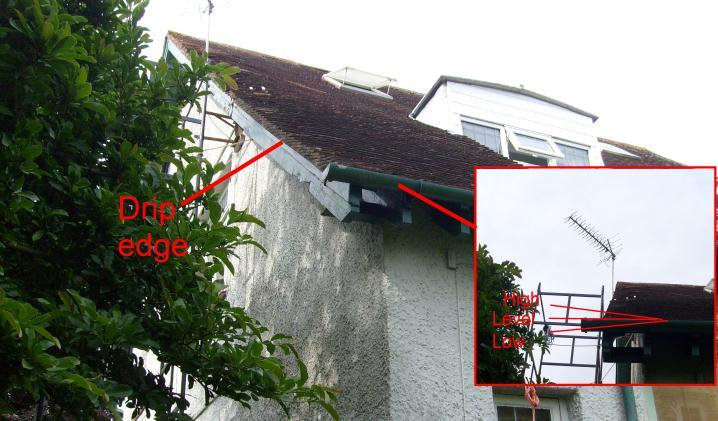I'm after some construction advice -
I've made several repairs over the years to the roof overhang but it's too rotten now so I'm going to replace at least the lower 5m.
If I look up the line of the roof, see inset in the picture, I can see that the rake slopes down - I've labelled this as "low". This is probably because of the rot.
What should this slope be - or should it be level?
Googling around I've come across a "drip edge". There is nothing like it fitted at the moment, should I fit one? I was woondering whether the rot was agrevated by water running along the undercloak into the wood work.
Thanks
A
I've made several repairs over the years to the roof overhang but it's too rotten now so I'm going to replace at least the lower 5m.
If I look up the line of the roof, see inset in the picture, I can see that the rake slopes down - I've labelled this as "low". This is probably because of the rot.
What should this slope be - or should it be level?
Googling around I've come across a "drip edge". There is nothing like it fitted at the moment, should I fit one? I was woondering whether the rot was agrevated by water running along the undercloak into the wood work.
Thanks
A


